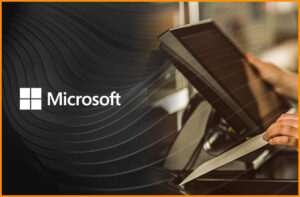Manufacturers of embedded appliances license Microsoft software to build a wide variety of devices, from small point-of-sale terminals to full-size healthcare appliances. The business possibilities created by Microsoft products are as endless as the opportunities.
Within Microsoft IoT software solutions, a typical configuration is the combination of Windows Server IoT 2019 and SQL Server IoT 2019 used in the same appliance. Windows Server IoT is typically used to manage the system operations: the networking, security and storage. SQL Server provides the database capabilities for management of application data.
Because Windows Server IoT and SQL Server IoT are frequently used together, customers often ask me how to license this configuration properly. This brings me straight to CALs, or Client Access Licenses.
What is a CAL? Do I need a CAL?
As Microsoft explains, “A CAL is not a software product; rather, it is a license that gives a user the right to access the services of the server.”
The challenge with CAL licensing is that it requires a technical understanding of how devices and users are connecting to the embedded device. Each connection to a Windows Server or SQL Server requires a CAL, so the typical answer to the question, “Do I need a CAL for this scenario?” is most often, “Yes.”
There are two types of CALs: Device and User CALs. Figuring out the number of users and devices that will be connecting to the solution helps you determine which type to use. Our goal is cost effectiveness, so an OEM will want to select the lower number between the two.
User CALs
With User CALs, an OEM purchases a CAL for every user who accesses the server to use services, regardless of the number of devices they use for that access. This sort of license is useful for situations where users do not regularly have access to a specific machine, like a gas station company that monitors stations across a region, or when users tend to have access to their own personal machine, like in remote work.
Device CALs
When it comes to Device CALs, an OEM purchases a CAL for every device that has access to the server, rather than each specific user. In these cases, several users could utilize a single licensed device. This sort of license is useful for situations where multiple users might be accessing the same device, like a store open 24 hours a day, or a manufacturing facility where employees over several shifts use the same machine.
In general, User CALs are more common, however, there are certain scenarios that make Device CALs the better choice.
Choosing the right CAL
Here are a few interesting things to keep in mind on choosing the right CAL for your business. First, embedded program CALs are channel-agnostic, meaning if you purchase an embedded CAL, it can be used with products purchased in other Microsoft licensing channels (for example, Volume Licensing).
Second, you cannot use previous generation CALs with newer versions. For example, you may not use Windows Server 2016 CALs with Windows Server IoT 2019. Instead, you will need new 2019 version CALs. You can, however, use newer CALs with older products.
Finally, SQL Server CALs are typically more expensive than Windows Server CALs. But Microsoft has a Core-based SQL license available that provides for unlimited connections, meaning no CALs required. This often is a cost-effective choice for OEMs building solutions that require many (or difficult to predict) connections.
Talk to a CAL expert
We are here to work with you and support your next Windows IoT embedded solution. As an authorized Microsoft IoT distributor, Bsquare has been helping customers with Microsoft solutions since 1994. Explore an overview of how to purchase Windows for IoT or contact us today.



